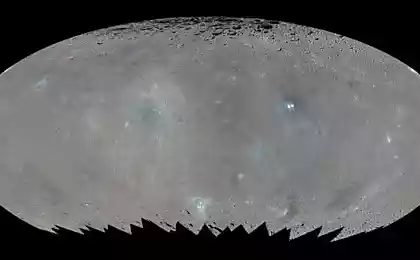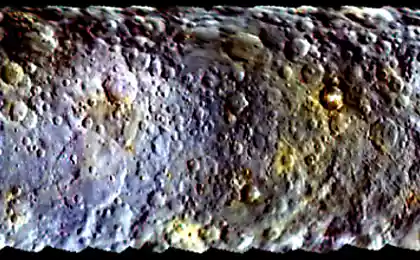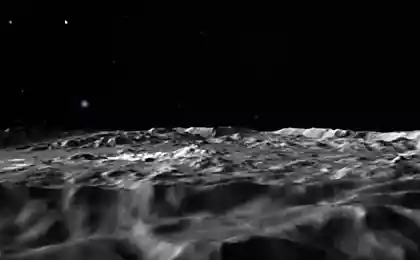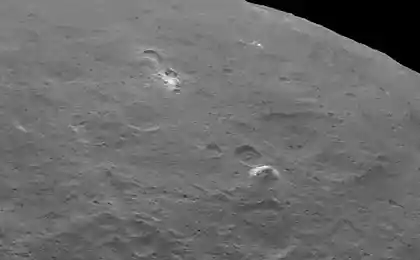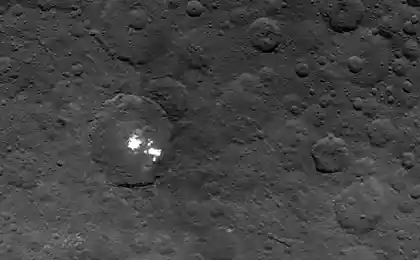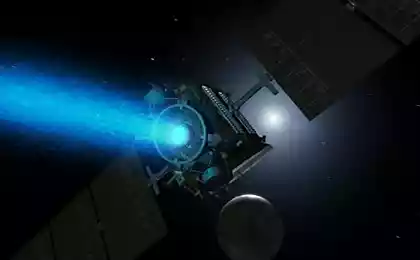861
NASA thinks he knows the nature of sunspots Ceres
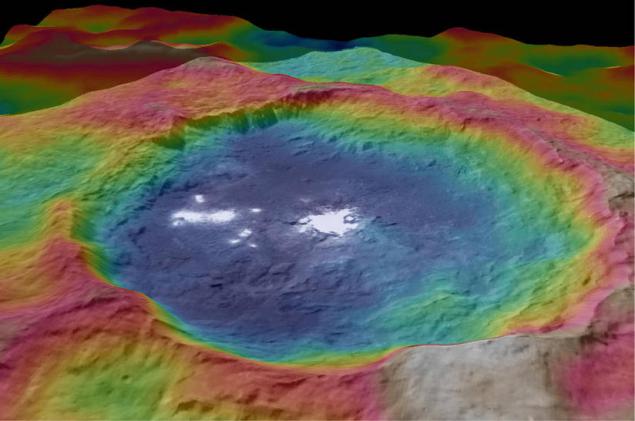
The bright spot with a very high albedo, located in one of the impact craters Ceres , many months are a mystery to scientists. However, if earlier in the Network have been many reports that these spots - nothing more than a manifestation of an alien civilization, but now it all subsided. Instead, publish materials serious scientists, proving that spot - a way out of water ice on the surface (which is consistent with imprinted "mist" coming from the crater), or is the output of mineral salts.
That last option is now accepted as a basis for the team Dawn - at NASA believe that the spot - is the output of mineral salts, outcrop, which was caused by a meteorite, when something hit the surface of the Ceres in this place. The head of the project team Dawn Chris Russell (Chris Russell) believes that it is still not water ice and salt. However, what kind of chemicals were found here, is unclear. This statement is contrary to the theory that under the surface of Ceres has liquid water, which freezes on impact of a meteorite on the surface of Ceres after outward.
According to Russell, the presence of mineral salts in this place is an indicator of current activity of Ceres. And the scientist believes that the salt came out not under the influence of a meteorite impact, and on their own. True to NASA still do not understand the mechanism of contact with salt on the surface of Ceres, which, as far as we can judge, very dry.
Another feature of the spots in the crater Occator is that right in the middle of a large hill spots have a certain type. At the same time, Russell mentioned the high mountain found at Ceres, a high albedo. Scientists believe that it may also be any of mineral compounds. In addition to this mountain on Ceres could be its "cousin", a photo which Dawn had not yet received.
The formation of the mountains to the Ceres - another mystery. The explanation could be geological activity due to the presence of subsurface ice. Mountain building in the world occurred in some other way, but Ceres special conditions are not similar to the earth.
Russell also pointed out that if Ceres has liquid water, then it could ever be detected life. One of the reasons for the refusal of the mission, during which the device will land on Earth Ceres - the fear that the planetoid would be "infected" terrestrial organisms.
Previously, scientists have already expressed their surprise at the irregularly shaped craters. Also it found another surprise - the information received by the spectrometer neutron and gamma radiation. The tool has fixed three flashes of high-energy electrons that can be the result of interaction between Ceres and solar radiation. So far, this observation has not received a full explanation, but the event may be important for understanding the structure of the planetoid and processes occurring at Ceres.
I recall that at the moment the probe Dawn is at a relatively low orbit of Ceres, at an altitude of 1470 kilometers from the surface of the planetoid. The spacecraft will get a complete image the entire surface of the planetoid during several flybys of the object. Each circled takes about 11 days. Since October Dawn moved to even lower orbit - 375 kilometers from the surface. In this position, the spacecraft will continue to monitor the Ceres, and photograph its surface. The unit will run at least until mid-2016.
Source: geektimes.ru/post/263314/
The cold - not my aunt
Poor optimists: Scientists have identified a link between the content of tweets and income users
